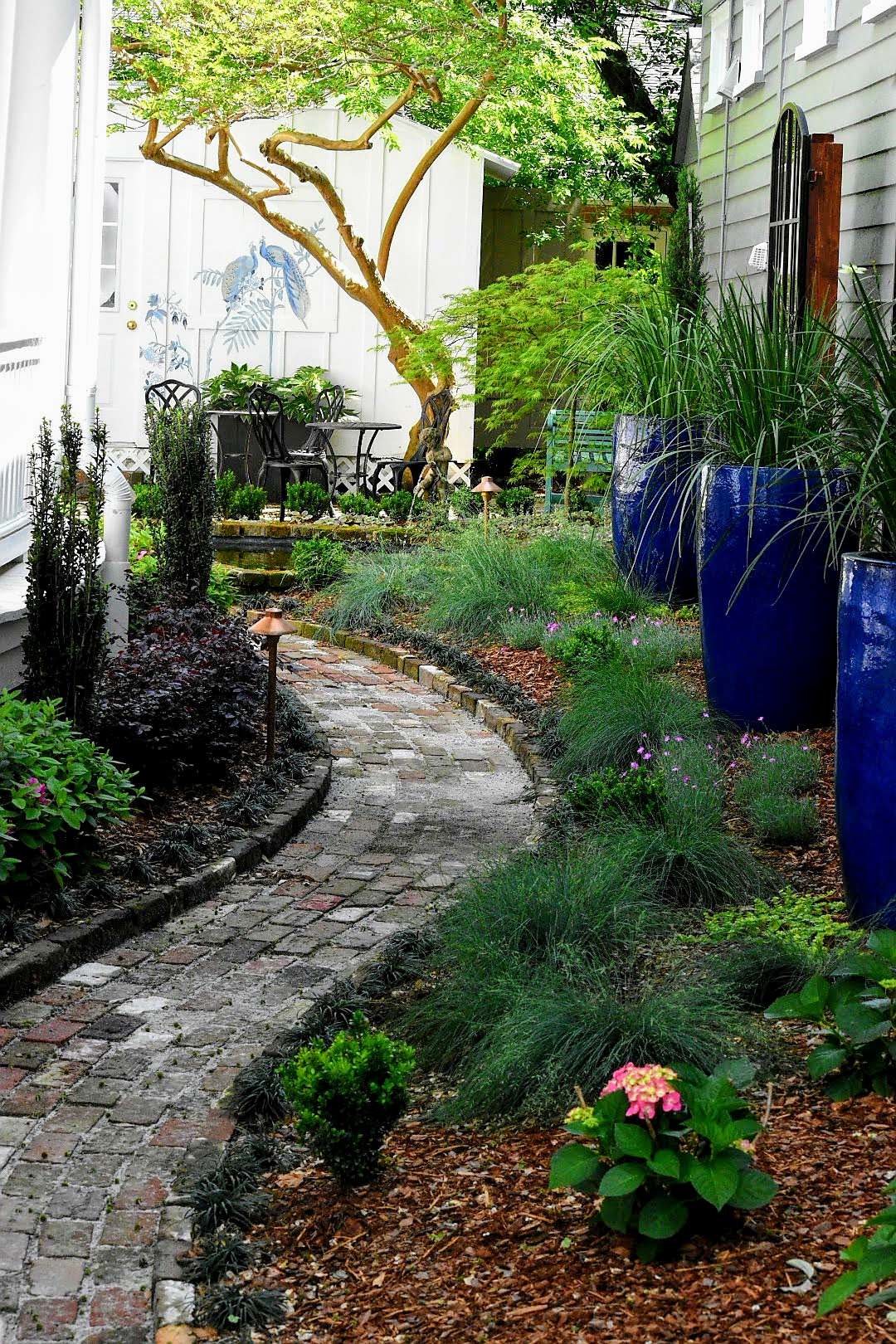The Function of Garden Style in Promoting Sustainability and Biodiversity
Yard design is progressively acknowledged for its possible to foster sustainability and improve biodiversity within metropolitan and country landscapes. By focusing on indigenous plant varieties and using water conservation strategies, developers can develop environments that not only flourish however likewise call for very little chemical treatment.
Importance of Native Plants
Highlighting using native plants in yard layout is essential for promoting ecological balance and sustainability. Native plants are those that naturally take place in a particular region and have adapted to the local climate, dirt, and wild animals. Their unification into gardens supports local ecosystems by providing habitats and food resources for indigenous pollinators, birds, and various other wildlife.

Water Conservation Methods

In addition, carrying out rainfall yards can record and filter stormwater drainage, advertising groundwater recharge while lessening disintegration - landscape design near Ladson South Carolina. These yards utilize native plants that prosper in wet conditions, successfully managing excess water while creating diverse environments
In addition, using mulch in garden beds assists maintain dirt moisture, decreasing evaporation and the regularity of watering (Landscape Designer). Organic composts, such as timber chips or straw, also enhance dirt wellness with time
Another effective technique is the use of absorptive paving materials in paths and patio areas, permitting rain to penetrate the ground rather than running off. This promotes moisture retention and reduces the demand for irrigation.
Finally, setting up a rainwater harvesting system can substantially add to water preservation efforts. Accumulating and storing rain for yard usage urges lasting methods and minimizes reliance on community water resources. By incorporating these methods, garden designs can efficiently promote water conservation while sustaining eco-friendly health and wellness.
Lowering Chemical Use
While lots of garden enthusiasts seek vivid and healthy and balanced plants, minimizing chemical usage is vital for promoting a lasting community. The dependence on artificial plant foods and chemicals can bring about soil deterioration, water contamination, and a decline in advantageous insect populations. By taking on natural gardening techniques, garden enthusiasts can enhance the health of their landscapes while advertising biodiversity.
One reliable method is to utilize garden compost and organic amendments, which improve the soil normally and enhance its structure. These techniques not only boost plant wellness however additionally minimize the need for chemical plant foods. Executing incorporated bug administration (IPM) methods better reduces chemical inputs by encouraging all-natural predators, such as ladybugs and parasitical wasps, to manage pest populaces.

Creating Wildlife Habitats
Creating vivid wild animals habitats within yards not just enhances biodiversity but additionally enhances lasting horticulture techniques focused on minimizing chemical usage. By incorporating indigenous plants, gardeners can provide necessary resources such as food and shelter for various varieties, consisting of birds, insects, and tiny mammals. Indigenous plants are well-adapted to regional conditions, needing less water and less chemical inputs, thus straightening with sustainability goals.
The style of these habitats can include varied layers of vegetation, such as trees, hedges, and ground cover, which enhances architectural complexity and supplies different particular niches for wildlife (landscape designer near Summerville SC). Additionally, attributes like water resources, such as tiny ponds or birdbaths, can draw in and support a wider series of species
Maintaining a naturalistic strategy, which may consist of leaving some areas wild or uninterrupted, permits the natural procedures of environments to thrive. This technique encourages the visibility of useful pests and pollinators, which play a vital role in the wellness of both gardens and bordering atmospheres. On the whole, producing wild animals habitats is an essential facet of sustainable yard layout, promoting ecological official site balance and strength while enhancing the charm and capability of outdoor areas.
Area Engagement in Gardening
Area engagement in gardening promotes a feeling of belonging and cumulative obligation, transforming specific gardening efforts right into common initiatives that benefit the entire area. By including community participants in gardening projects, we can cultivate not only plants yet also connections and social networks. Local gardens work as essential spaces for education, where individuals of any ages can discover lasting practices, biodiversity, and environmental stewardship.
Collective horticulture initiatives, such as area yards, promote the exchange of expertise and sources, ensuring that all participants can add and profit. This inclusivity improves neighborhood strength, as participants collaborate to overcome challenges such as food insecurity and environmental deterioration. Furthermore, neighborhood gardens can serve as platforms for cultural expression, permitting people to share their heritage via varied planting and gardening methods.
Moreover, involving the neighborhood in gardening initiatives can lead to increased recognition of neighborhood environments and the value of biodiversity. By working jointly to design and maintain these rooms, citizens promote a shared dedication to sustainability, developing an enduring influence on both the atmosphere and community cohesion. Inevitably, neighborhood engagement in horticulture is an effective tool for advertising ecological stewardship and enhancing the lifestyle within neighborhoods.
Conclusion
By emphasizing the usage of indigenous plants, executing water preservation techniques, and lessening chemical inputs, yards can effectively support neighborhood ecosystems. Collectively, these methods not just improve the elegance of spaces however additionally promote ecological balance, making garden style a vital component in the search of a sustainable future.